The Kissing Hand Story-related Math Pack for Preschoolers
Affiliate Disclosure: “This post contains affiliate links, which means I receive a small commission, at no extra cost to you, if you make a purchase using those links.”
When children turn one year old, they start exploring patterns and shapes, comparing sizes, and counting objects, until they are five years old, since Math is everywhere, it also helps children make sense of the world around them and solve problems, including when they are playing.
That is why preschool teachers and parents must provide opportunities for children to do meaningful, fun, and positive mathematical activities to set up the foundation for their future.
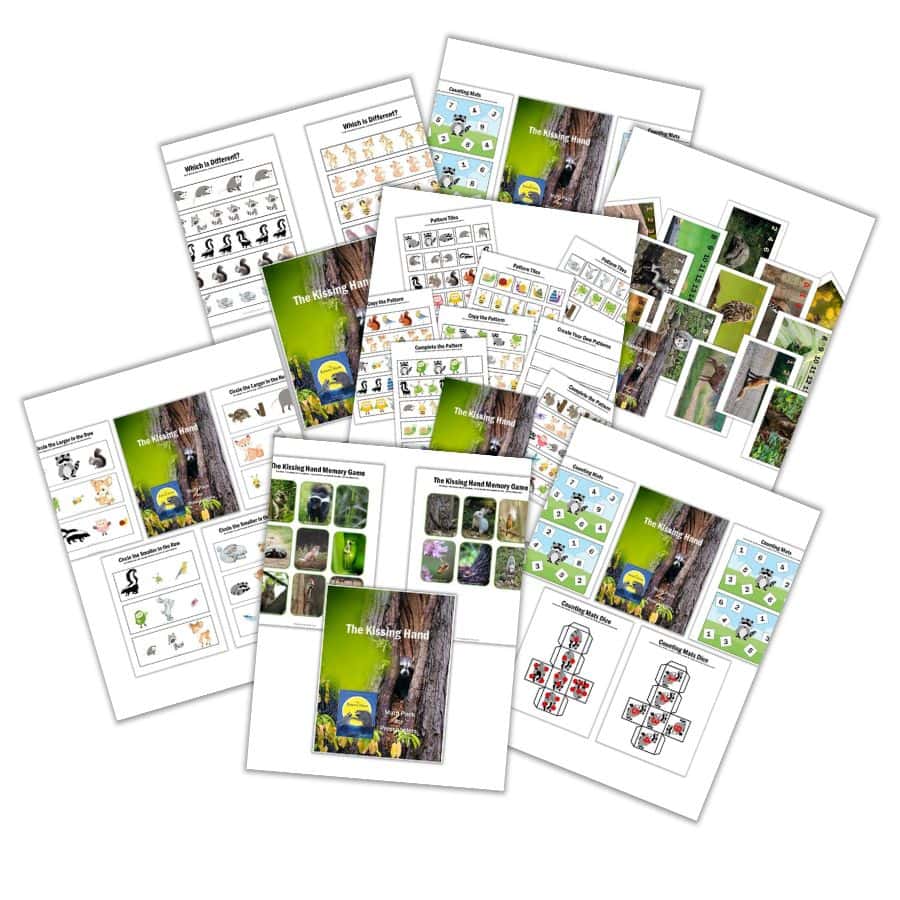
I included a FREE 37-page long The Kissing Hand Math Pack with nine different fun and educational math activities that you can use with your preschoolers in your classroom or at home, to go along with this story. You can get it at the end of this post.
Benefits of Teaching Math to Preschoolers
Learning Math provides preschoolers with a lot of benefits such as the development of:
- Creative and critical thinking skills.
- Problem solving.
- Communication.
- Understanding of patterns, sizes, and shapes.
- Ability to understand the world around them.
The Kissing Hand Math Pack
The Kissing Hand is a sweet story that talks about how a mother raccoon shares a family secret to teach her son that her love will always be with him no matter where he is. It is also my favorite story to start the school year because I feel that it helps preschoolers feel less stressed or scared when they come to school for the first time when they identify themselves with Chester, the little raccoon that is afraid to go to school from the story.
There are many math activities you can do using this storybook as a base. Below are just some ideas.
The Kissing Hand Memory Game
This game is great to strengthen the children’s concentration, and memory and to work on one-to-one correspondence and creating sets.
The Kissing Hand Math Pack includes two sheets with a total of 15 cards each, one for each animal that appears in the story, using beautiful pictures. Print each page twice, for each set of the game, using white cardstock. Cut out and laminate the cards to make them last longer.
This game can be played as an individual activity or with a partner. Keep it super simple and have the children place the cards face down. Each child has to select a card randomly and try to match the selected card with its double. The child that matches the most cards wins the game.
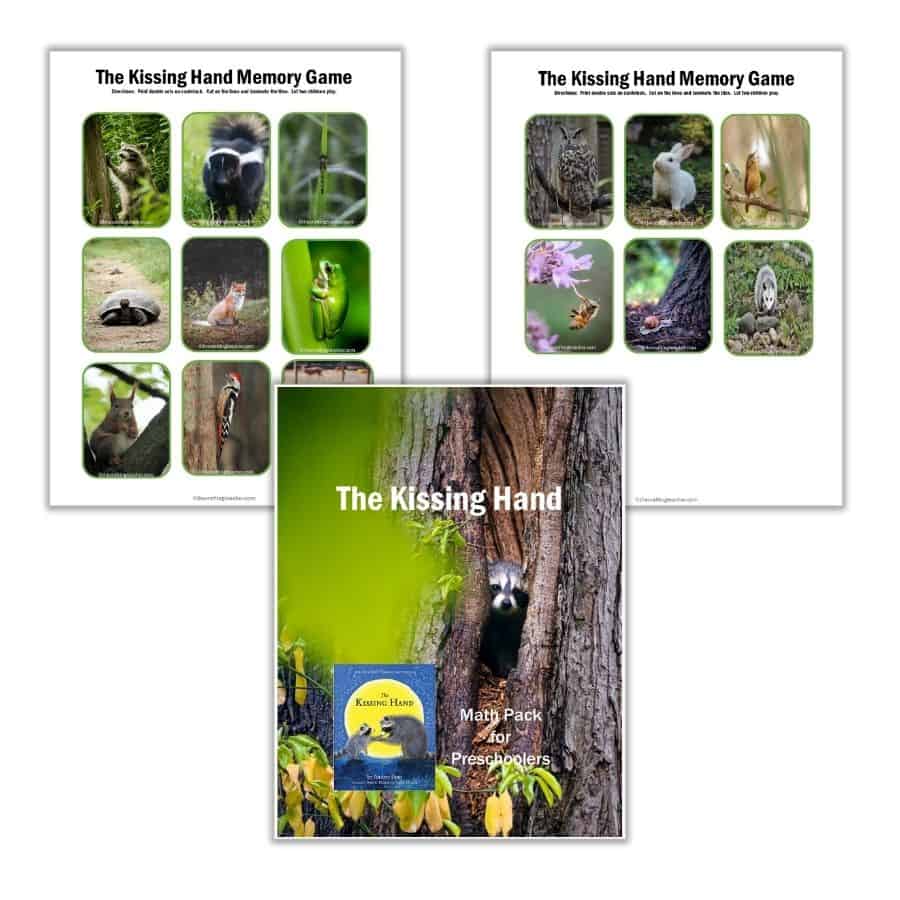
The Kissing Hand Visual Discrimination Activities
Preschoolers must develop their visual discrimination to be able to identify and recognize similarities and differences not only in sizes, but also in shapes, letters, numbers, colors, and positions. It is an essential skill that will allow doing important activities in life from knowing how much water a container can hold to big of space they need to park a car, to say the least.
Size Discrimination
The Kissing Hand Math Pack contains two size discrimination activities, one to circle the larger animal in the row, and the other one to the smaller. Both activities come with two sheets with 3 strips each, featuring different animals from the story. You can either keep the sheets together or divide the strips.
If you want to reuse the activity, just print the sheets in white cardstock and laminate them or use a dry-erase pocket to protect them. You can divide the sheets into strips if you want.
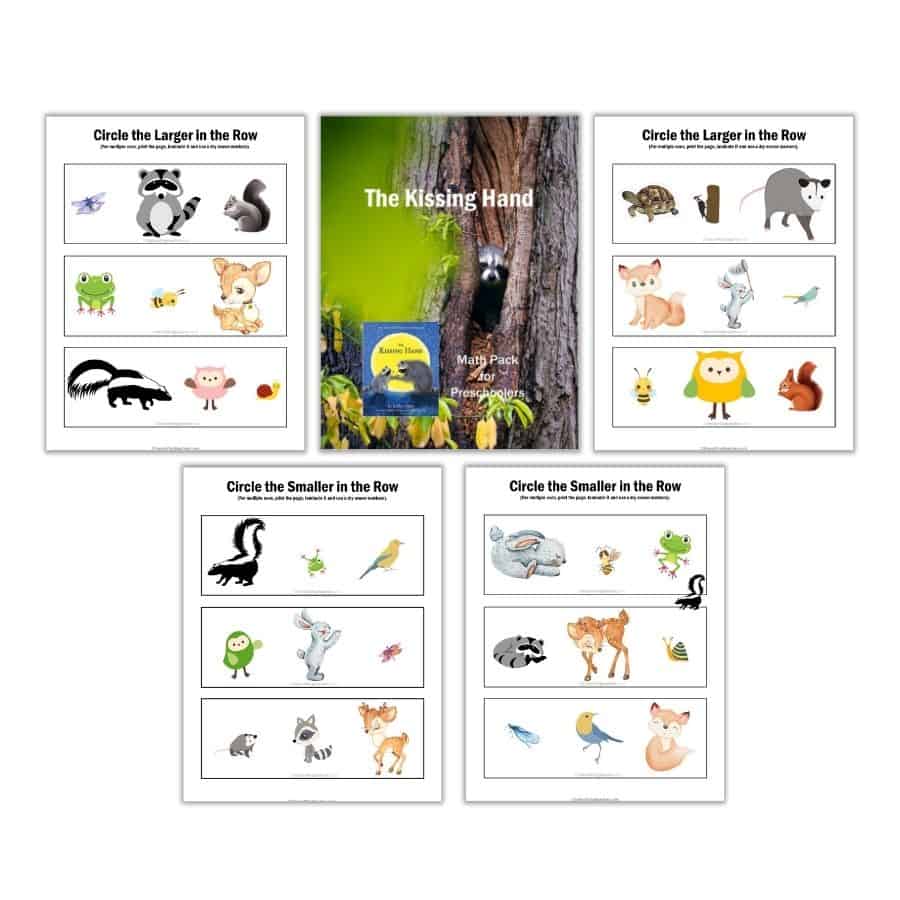
Recognizing The Different Animal
The Kissing Hand Math Pack includes another activity to help children practice their visual discrimination identifying which animal in the row is different. The pack comes with two sheets with 5 strips each, for a total of 10 different strips. You can either keep the sheets together or divide the strips.
Like the previous activities, if you want to reuse this one multiple times just print the sheets in white cardstock and laminate them or use a dry-erase pocket to protect them.
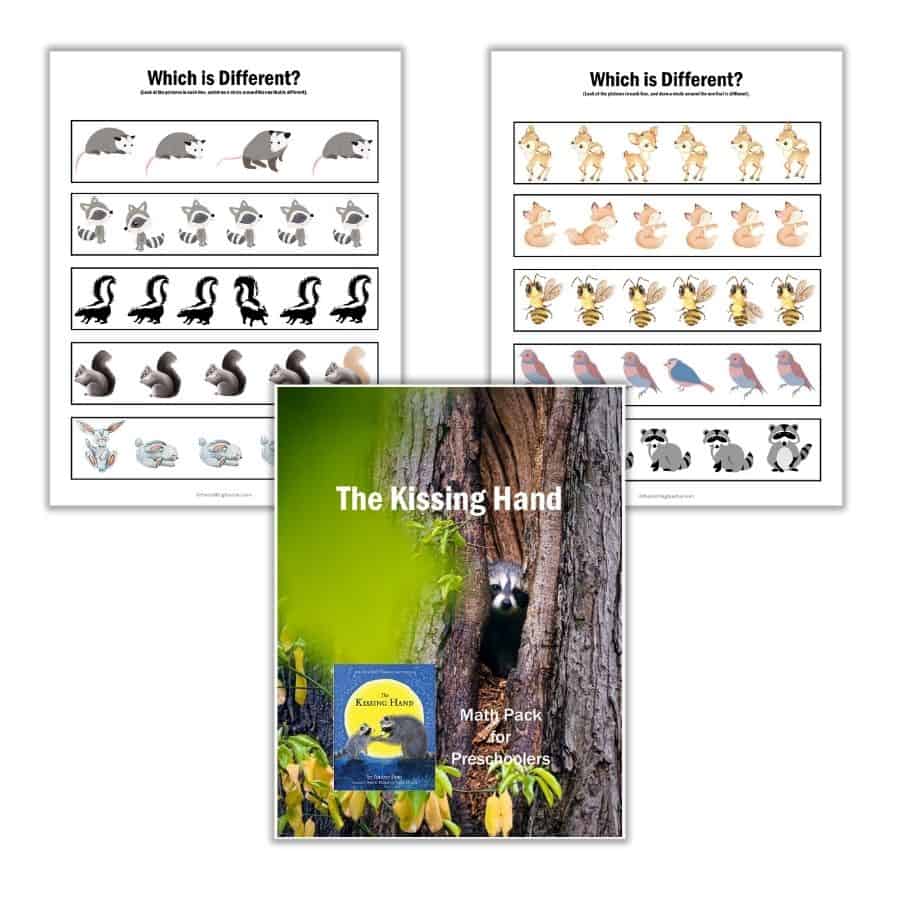
The Kissing Hand Pattern Activities
Patterns can be found everywhere, and children must learn to identify them, to be able to make predictions and understand what comes next, to make a logical connection, and to develop their reasoning skills.
Pattern activities also help preschoolers develop their visual discrimination and fine motor skills. The Kissing Hand Math Pack includes three different pattern activities. One to complete the pattern, another one to copy the pattern (both with two sheets of 5 strips of different pattern combinations each), and the last one to create their own pattern. I also included 3 sheets of tiles with 62 different designs, to use with these activities.
If you want to reuse these activities you only have to print them out in white cardstock and laminate them or protect them with a dry-erase pocket.
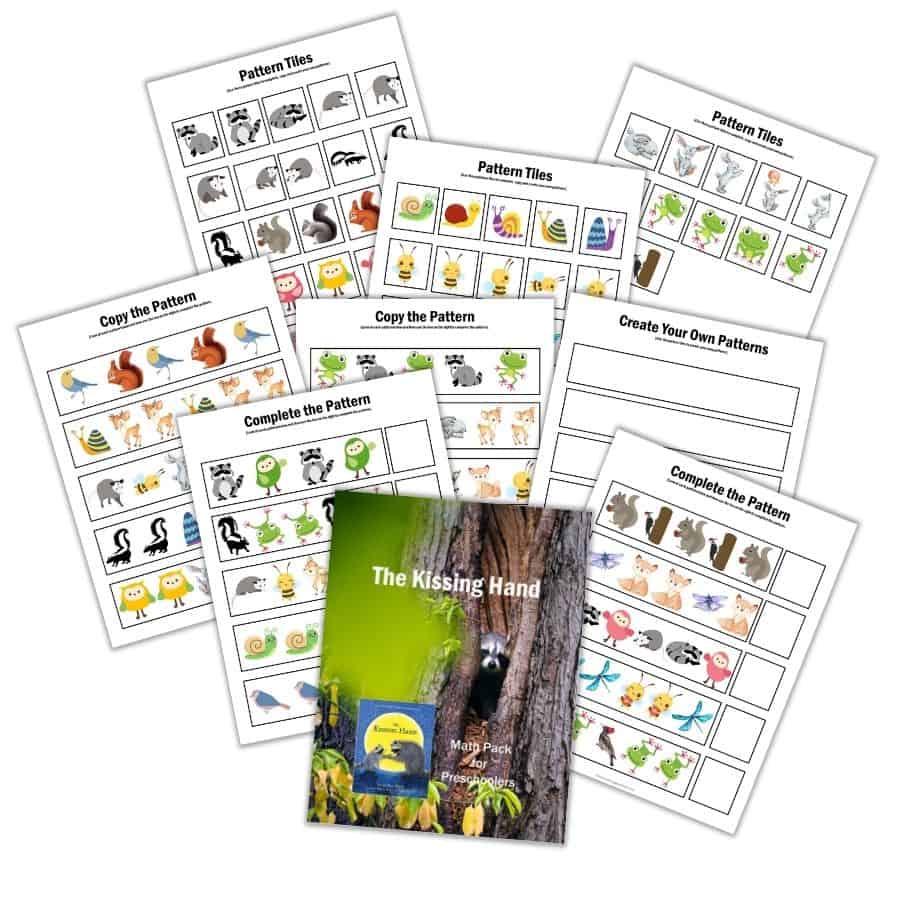
You can do the same activities using woodland plastic animals. You just have to present a pattern and invite a volunteer to complete it, copy it, or come up with his/her own pattern, trying to motivate every child to try. When you finish with the activity, keep the animals available for them to continue creating patterns on their own. Below are great examples of animals you can use.
The Kissing Hand Counting Activity
Counting is an essential skill that preschoolers need to learn because it helps them understand the meaning of numbers, and is the base for all the other number concepts. That is why we must give preschoolers plenty of opportunities to do hands-on counting and number-related activities.
To help them practice this skill I created a fun game in The Kissing Hand Math Pack, that includes 2 sheets of 2 different sets of counting mats and 2 different dice, one with dots and one with numbers. If you want to reuse the activity, just print the sheets out in white cardstock and laminate them, or place them in a dry-erase pocket.
Since you probably have preschoolers at different levels of development, you can use one of the dice or two of each, depending on how challenging you want to make the activity for a particular preschooler. Of course, you can also use real dice with dots or numbers instead.
You can have one or two students playing this game. To play each child has to roll one or two dice, identify the number, and find the same number in his/her mat to cover. If the number is already covered, the child loses the turn, and the other child rolls the dice. The winner is the child who covers all his/her numbers first.
You can use different manipulatives to cover the numbers like bingo chips, buttons, mini erasers, woodland stampers, or woodland stickers. Just remember that if you use the last two, you probably won’t be able to reuse the activity.
This game is great to practice:
- One-to-one correspondence.
- Number recognition.
- Counting.
- Hand-eye coordination.
- Adding.
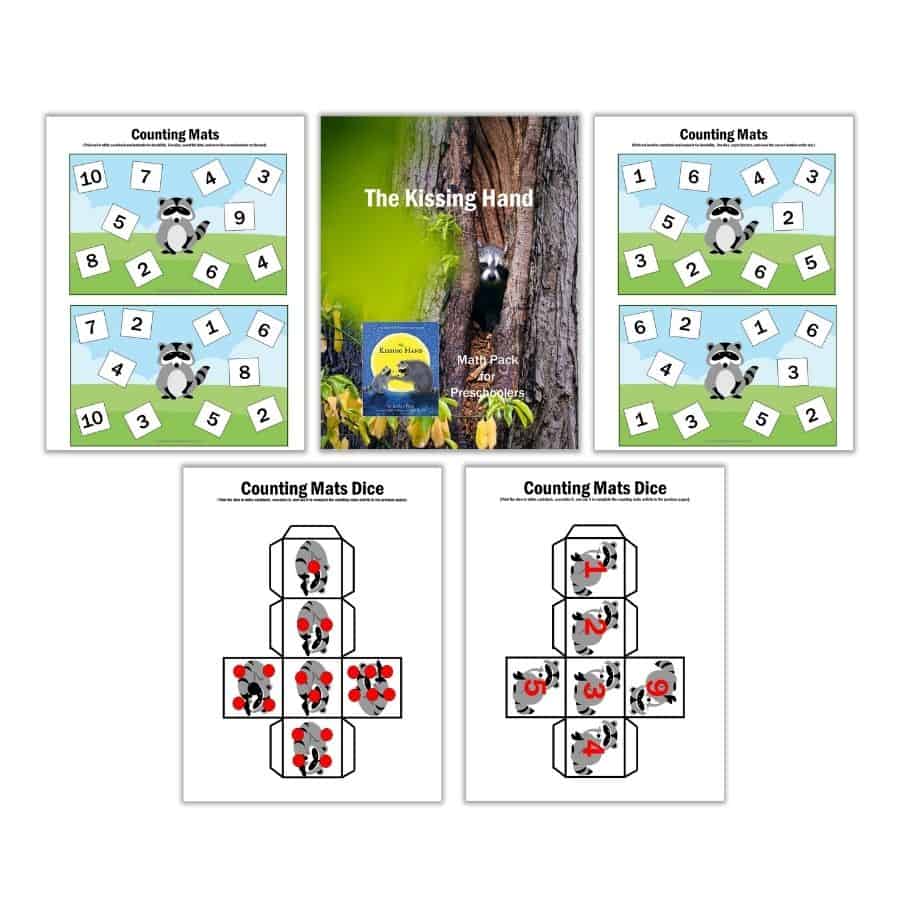
The Kissing Hand Number Puzzles
I found such beautiful pictures of these animals, that I wanted to use them for number puzzles. Print them out in white cardstock and laminate them, for durability. The Kissing Hand Math Pack contains 15 sheets, one for each animal in the story, with different number combinations.
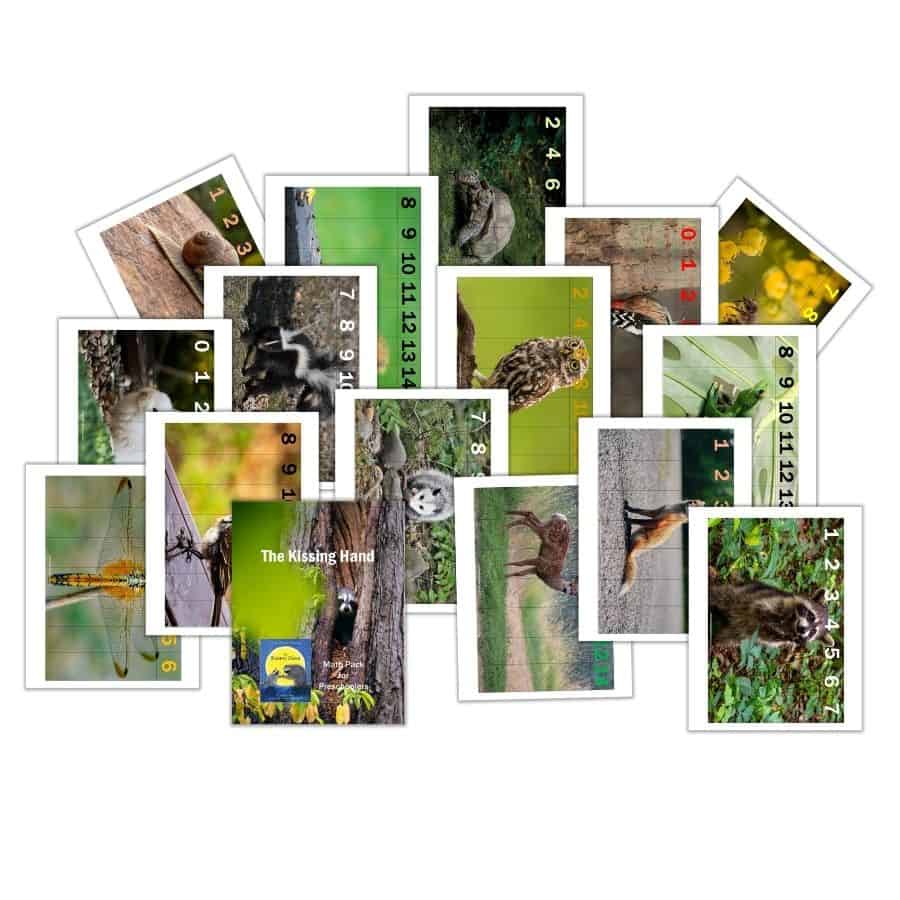
Other Raccoon-Related Books
Add more books about raccoons to your library and other centers, to give children a wide learning experience and variety to choose from. You can find these books at your local library, used book store, and on Amazon. The titles have my affiliate links, that will take you directly to the right page on Amazon.
- Raccoons! by Hope Aicher. This book is a collection of full-color photos and fun, interesting facts about raccoons.
- Exploring the World of Raccoons by Tracy C. Read. Describes the natural history of these animals and explains how that heritage helps them thrive in cities as well as in fields and woodlands.
- Love You S’More by Melinda Lee Rathjen. In this little book, two competitive raccoons realize that with all that love, everyone wins.
- Kiss Those Toes by Rainstorm Publishing. This sweet, rhyming story follows a group of forest animals as they play a game of hide-and-seek with their children and playfully kiss their toes, noses, cheeks, and bellies when they find them.
- Raccoon on His Own by Jim Arnosky. When a baby raccoon is swept downstream in an abandoned canoe, he feels afraid. But soon he notices all kinds of things he has never seen before, and from the safety of his little boat, he begins to explore the world around him.
Pin It For Later
If you are in a rush and don’t have time to read the post and download the printable but want to save it for later, pin it to one of your Pinterest boards for later.
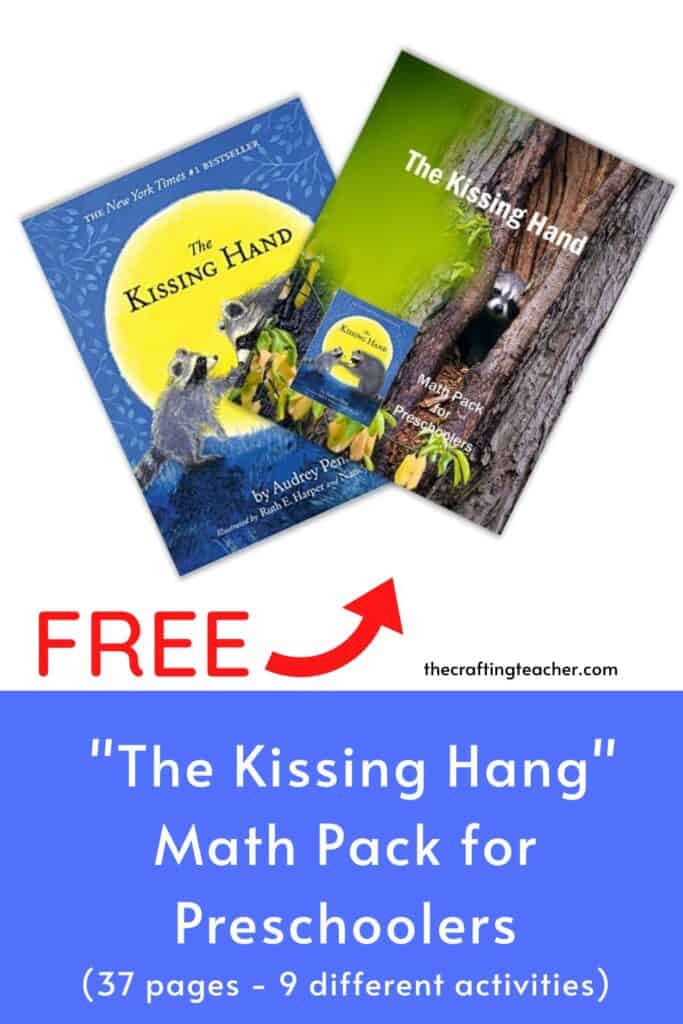
Don’t forget to download The Kissing Hand Math Pack. Just click the bottom below, and type your information, for an immediate download.
You can use these ideas by themselves, but I will invite you to combine them with the FREE literacy and science activities I created for this beautiful story, The Kissing Hand, to take advantage of the opportunity this book offers. Remember that for a more comprehensive and complete educational process, you should not divorce literacy from math, science, or any other domain. They intermingle together and complement each other.
Be happy, safe, and creative. I wish you well.
Love,

P.D. Please let me know if you like any of these ideas worked for you, or if you think I need to add or replace something. My goal is to help you in any way I can and I don’t like anything better than to post something that you might find useful. Also, if you come up with different ideas and want to share them, I would love to post them as well.

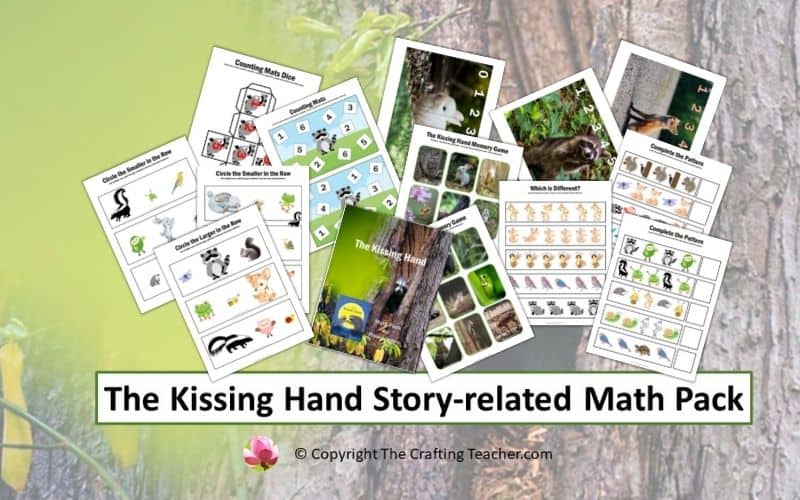
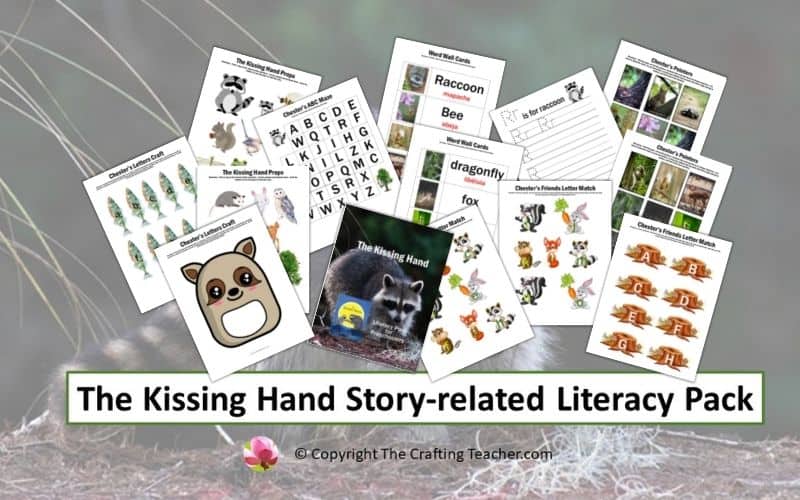
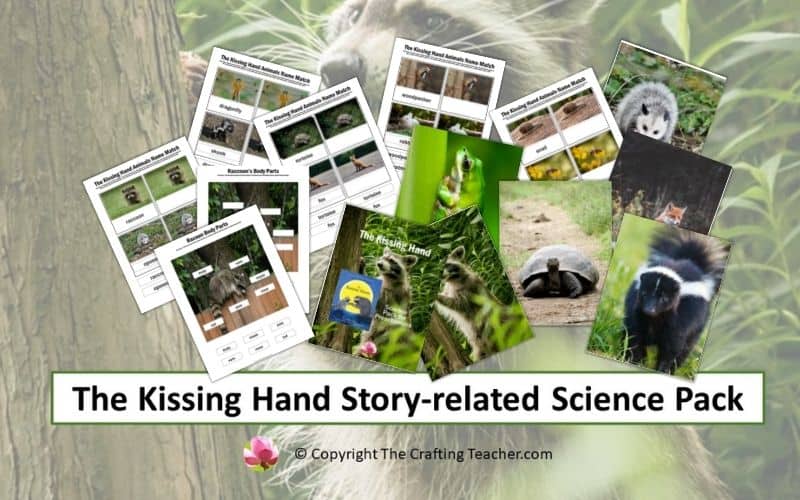
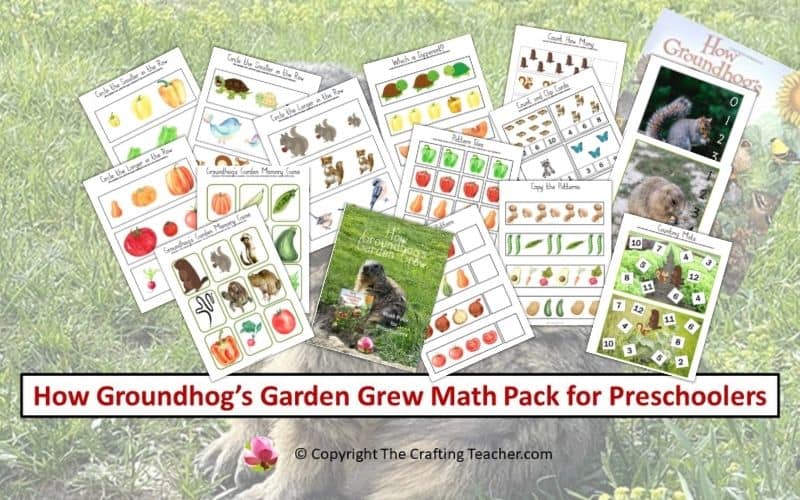
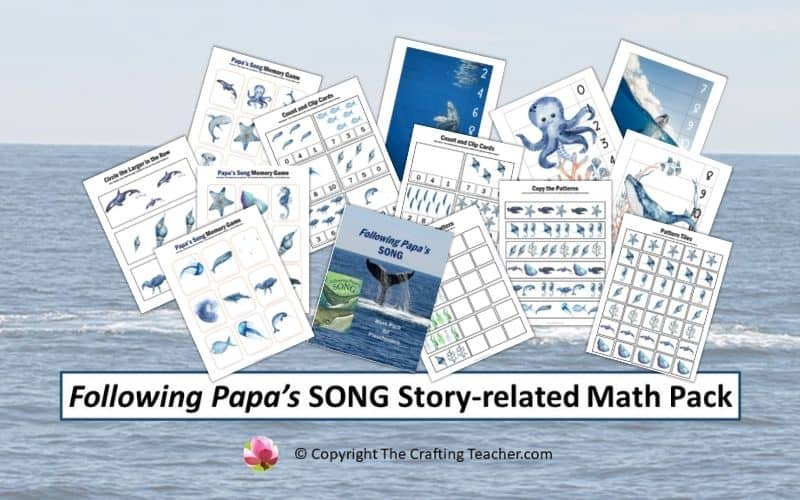
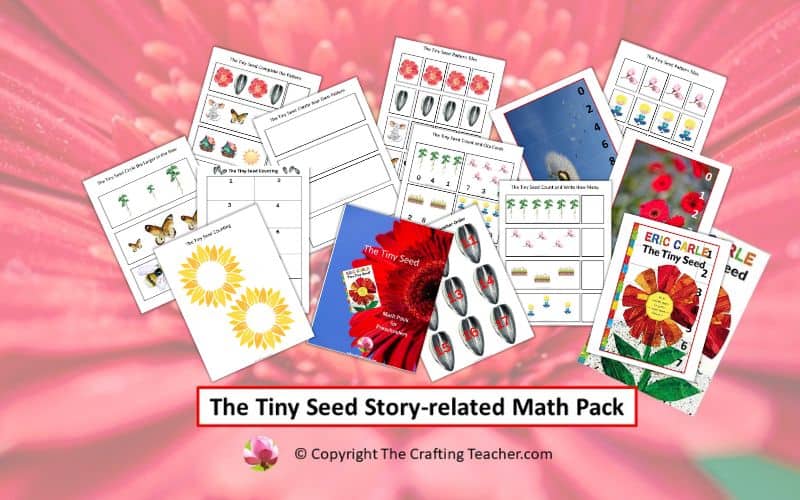
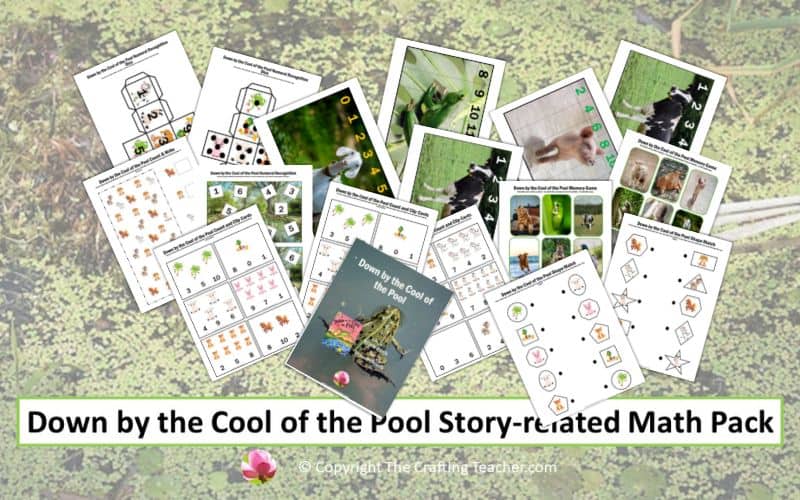
I just could not leave your website before suggesting that I extremely loved the usual info a person supply on your visitors? Is gonna be back often in order to check up on new posts.